Introduction
The German defeat, which had been looming since Stalingrad, if not before, forms the narrower historical context of Mittelbau-Dora Concentration Camp. It is here that the exhibition has its point of departure with regard to content and design alike. Upon entering the exhibition, the visitor encounters photos of Stalingrad in ruins and the speech by propaganda minister Goebbels at the Berlin Sportpalast (“Do You Want the Total War?”), as well as relics recovered from the Kohnstein tunnels. This rubble and rocket scrap paint a picture of Dora as a battlefield of the Total War, while at the same time spanning the gap between the year 1943 and the present. The main focus here is the question as to why National Socialist Germany did not end the war in 1943, but headed toward total defeat by waging the Total War, escalating its repression and extermination policies to a final extreme in the process.
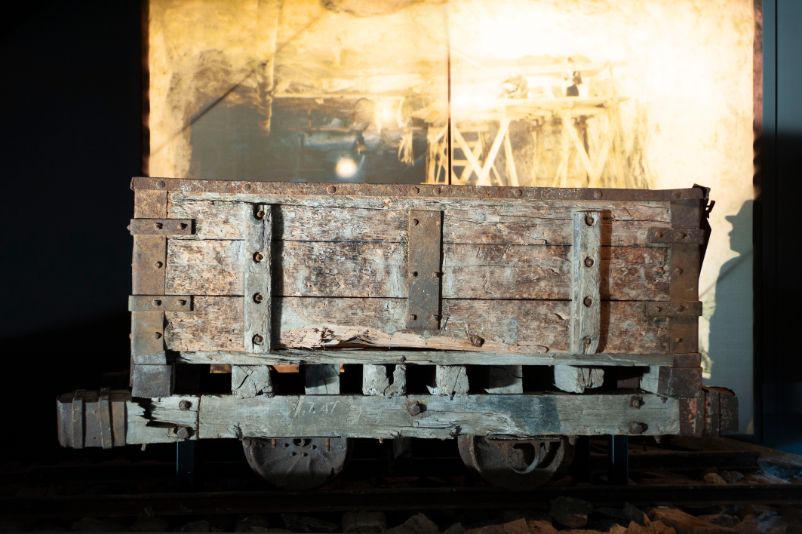
Concentration Camp Forced Labour and Relocation of Industrial Facilities Underground
The central focus of the exhibition is on forced labour in the concentration camps and thus on those who suffered from this practice and died as a result of it: the inmates. The chief exhibition object here is a mine car salvaged from the tunnel – a kind of oversize wagon with which inmates were compelled to convey the rock and rubble of the tunnel-driving process out of the mountain’s interior by means of toilsome and debilitating labour. The mine car is representative of the two chief themes of Mittelbau-Dora – the history of forced labour in the concentration camps and the attempt to relocate factories to underground locations during the second half of the war.
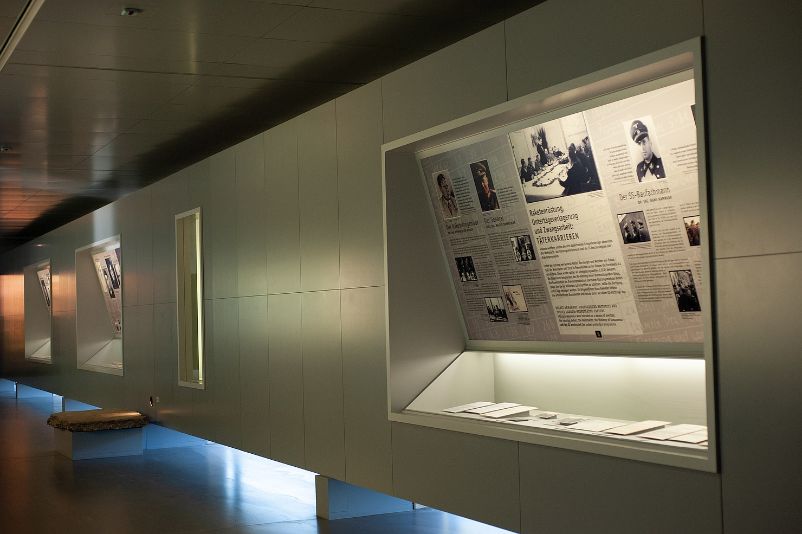
Perpetration and Responsibility
One of the chief questions raised here concerns the motivations of the perpetrators, accomplices and spectators of the crimes. The exhibition undertakes a nuanced depiction of the perpetrators and their accomplices within the camp environment, and endeavours to show how their motives lay in a blend of social and ideological structures still potent today to a certain extent. Without moralizing intentions, the visitor is thus to be encouraged to take a self-critical look at the political, ethical and social attitudes they hold today. The relevance of the memorial’s work for the present thus becomes evident without any qualification of the National Socialist crimes through recourse to false analogies and ultimately ahistorical comparisons with such events as the Rwandan genocide or “ethnic cleansing” in the former Yugoslavia. What is more, an answer is thus given to the question posed by many memorial visitors, especially the younger ones, in view of the fact that the last generation to have witnessed the events of World War II first hand will soon have died out: “What does the history of the concentration camps have to do with us today, more than seventy years later?”
Structure
Spatial Structure of the Exhibition
In long display cases through the centre of the room, the history of Mittelbau-Dora is told with the aid of narrative texts and numerous documents, photos, and three-dimensional objects. The last-named were found on the camp grounds or in the tunnels, or placed at our disposal by surviving inmates or persons living in the vicinity of the Mittelbau camps during the years in question. A large number of the documents and photos on view only became available in recent years as a result of in-depth research in archives in Germany and abroad, for example in Moscow and Washington. In the form of reproductions, they have here been made accessible to the public for the first time.
The narrative threads spun in the display cases at the centre are supplemented by additional biographical information presented in large cases along the walls. Here the biographies of nineteen inmates and thirteen perpetrators are shown along with related texts and objects. In the selection process, importance was attached to choosing biographies of a representative quality. The inmate biographies accordingly convey National Socialist persecution in all its many forms, while the individual perpetrator biographies serve as examples of certain perpetrator categories.
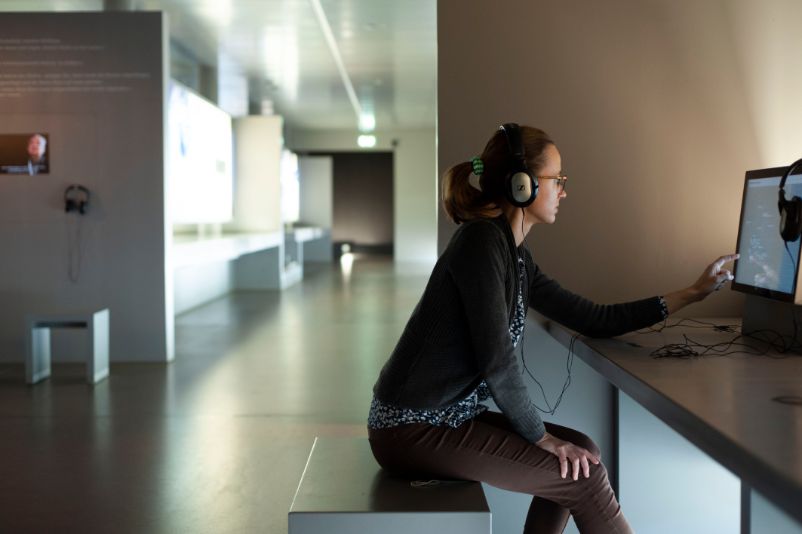
Immersion Zone
For visitors wishing to delve deeper into the history of Mittelbau-Dora, there is not only extensive literature available in the library, but also computer workplaces right in the exhibition rooms. The latter offer a means of retrieving interviews with witnesses to the historical events and more in-depth information on Mittelbau Concentration Camp’s forty subcamps in a number of languages. The database is designed in such a way that new insights as well as newly rediscovered documents and photos can easily be incorporated.
Thematic emphases
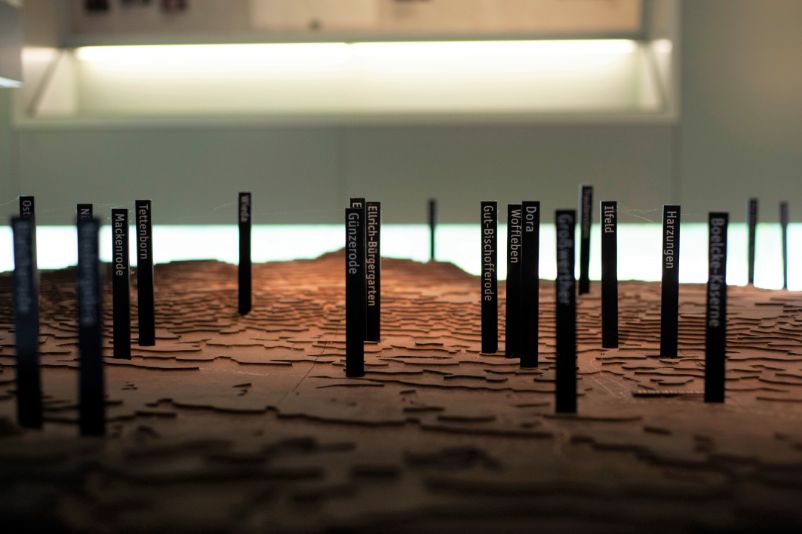
1. From Dora Subcamp to Mittelbau Concentration Camp
This section recounts the foundation of Dora as a concentration camp subcamp in conjunction with the relocation of the rocket armament activities away from Peenemünde, the establishment of the underground concentration camp in Kohnstein Mountain in the autumn of 1943, and the development from Buchenwald subcamp “Dora” to the independent Mittelbau Concentration Camp in the course of the year 1944. A further topic is the embeddedness of Mittelbau Concentration Camp in the regional Nazi camp cosmos. A landscape relief of the Harz Mountains shows the locations of the individual camps in the Mittelbau complex, which formed a dense network spreading over the entire region.
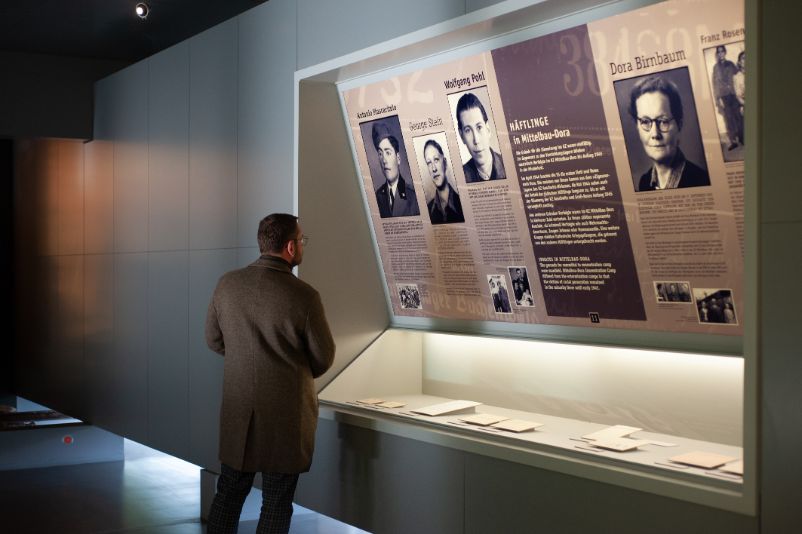
2. The Inmates
Here an overview is given of the Mittelbau-Dora Concentration Camp inmates’ native countries as well as the wide range of reasons for their committal to concentration camp. Hierarchies within the inmate society are explained, including the inmate functionary system. The defining characteristic of concentration camp imprisonment in Mittelbau-Dora was the gruelling forced labour, which is the chief focus in this section of the exhibition as well. Further important themes are the inmates’ resistance and their acts and means of self-sustainment.
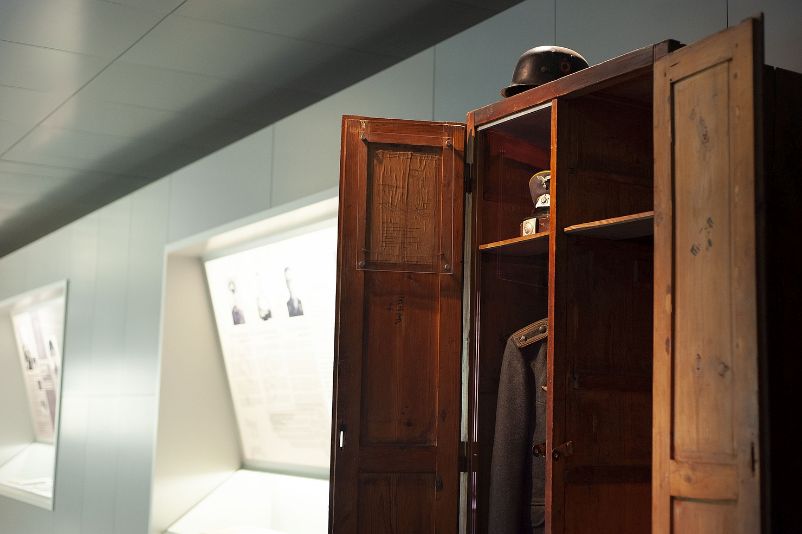
3. Perpetrators, Accomplices and Spectators
The members of the camp SS and the guard details, which consisted in large part of Luftwaffe (air force) soldiers, are presented here. Representative biographical examples are also cited as a means of drawing attention to the managers, technicians and engineers without whom the operation of Mittelbau-Dora Concentration Camp would not have been possible. Questions are moreover raised here as to the involvement of the Mittelbau camps in the regional economic structure, and regarding the conduct of the companies profiting from inmate labour.
4. Dissolution and No End to Hardship
The phase of Mittelbau Concentration Camp’s dissolution commenced with the arrival of 16,000 inmates whom the SS brought to the Harz Mountains from the vacated Auschwitz and Gross-Rosen Concentration Camps in the winter of 1944/45. This section of the exhibition addresses the death marches leaving Mittelbau in April/May 1945, the liberation of a few hundred survivors in Dora and the Boelcke Casern on 11 April 1945, and the history of the Dora DP (displaced persons) Camp. A further topic of concern here are the post-war trials of perpetrators from Mittelbau Concentration Camp, only a few of whom were even arraigned. Their biographies contrast starkly with the post-war careers of many other perpetrators, chiefly managers and engineers, and the fates of concentration camp survivors who were compelled to wait for decades before receiving social recognition and material compensation for the hardships they had suffered.

